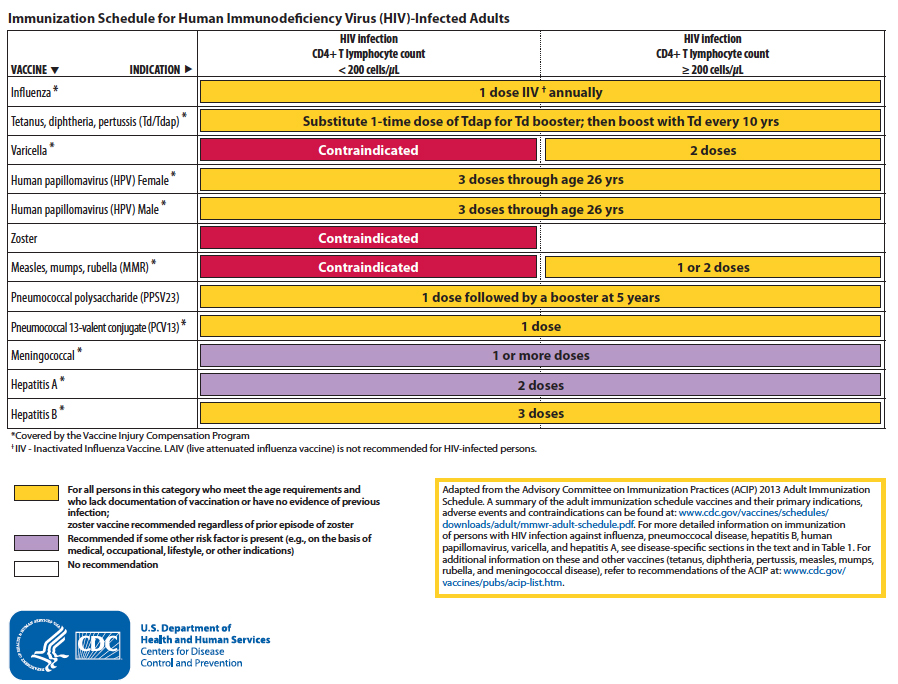An ongoing dialogue on HIV/AIDS, infectious diseases,
May 8th, 2013
HIV Opportunistic Infection Guidelines Updated
Some very hard-working folks at the NIH, CDC, and IDSA have updated the Guidelines for the Prevention and Treatment of Opportunistic Infections in HIV-Infected Adults and Adolescents, which are available for review here.
As with the previous versions (the prior iteration is from 2009), the OI Guidelines are comprehensive, exhaustively referenced (184 references for TB alone!), and authoritative. Note that the PDF version weighs in at 416 pages, so I doubt many people will be printing this out and carrying it around in their white coats. Fortunately, for the first time these Guidelines are also available in their entirety on-line in an HTML version, which is undoubtedly how most will access them, and certainly make them easier to update.
After a quick review (no, I have not read all 416 pages quite yet), here are a few of the notable changes, plus a couple of miscellaneous comments:
- There is broadened discussion of when to start HIV therapy in the setting of multiple OIs, in particular tuberculosis. This reflects publication of several pivotal clinical trials — here’s a nice discussion of three of them, to refresh your memory.
- There are updates on treatment of hepatitis B and C; for the latter, strong consideration of deferring therapy is explicitly mentioned for patients with minimal disease given the rapid pace of drug development. This must be the preferred approach for most patients right now, for obvious reasons.
- Diagnosis and management of IRIS — again, in particular for TB — is covered for each OI.
- The structure of the Guidelines is now different, with pathogen-specific tables of recommended prevention and treatment options at the end of each OI section.
- Following ACIPs lead, they endorse the three-vaccine approach to preventing pneumococcal disease — one 13-valent conjugated vaccine and two 23-valent polysaccharide vaccines separated by 5 years; we further discussed it in Journal Watch here.
- Vaccination for HPV is recommended for men and women through age 26. Related: still no formal recommendation to do anal pap smears on either men or women.
- What about the zoster vaccine? Despite this study (presented, not published) showing that vaccination is safe in HIV-infected patients, the Guidelines provide no formal endorsement, only saying it “is contraindicated in persons with CD4 cell counts <200.” (For what it’s worth, I give it to all my patients older than 60 with cd4 > 200.)
At the end of the document, there are several summary tables as well as this clear and useful figure with the recommended immunizations (click to enlarge):
So I do have a few small quibbles/queries, but they are minor. Namely:
- How did they come up with the order of OIs? It seems to be more or less random. Here’s how it starts — PCP, toxo, cryptosporidia, microsporidia, TB, MAC, bacterial respiratory infections… What the? Undoubtedly there’s a rationale I’m not seeing.
- If you click on the “Endemic Mycoses” link along the left of the HTML version, you get three endemic mycoses (histo, blasto, cocci), plus two that are not generally thought of geographically, cryptococcus and aspergillus.
- Still not much love for beta glucan for PCP diagnosis. With the caveat that we’ve used the test now for years, which makes me far from impartial, it really is quite useful — an HIV+ patient with advanced disease, respiratory symptoms, and a beta glucan > 500 has PCP until proven otherwise.
Note that the panel responsible for these guidelines is inviting comment; just send an email to ContactUs@aidsinfo.nih.gov by May 21, 2013.
I’m sure if we ask nicely, they’ll let us know how they came up with the order for the OIs…



For your patients over 60 with a CD4>200, are you giving one or two doses of the zoster vaccine?
One dose — just as in HIV negative patients.
Paul
Thanks. Was asking because the study you linked to is using 2 doses.
Yes, they used two doses, but did not find that two was more immunogenic than one.
I think that the guidelines are ordered by type of agent: parasites, bacteria, fungus, virus and special situations… Why this order of types? That I can’t answer.. Thanks for another very useful briefing about this issue.
Hmmm, maybe … but PCP has been in the “fungus” class for at least a decade now!
Paul
Yes, PCP Is outside my possible explanation…